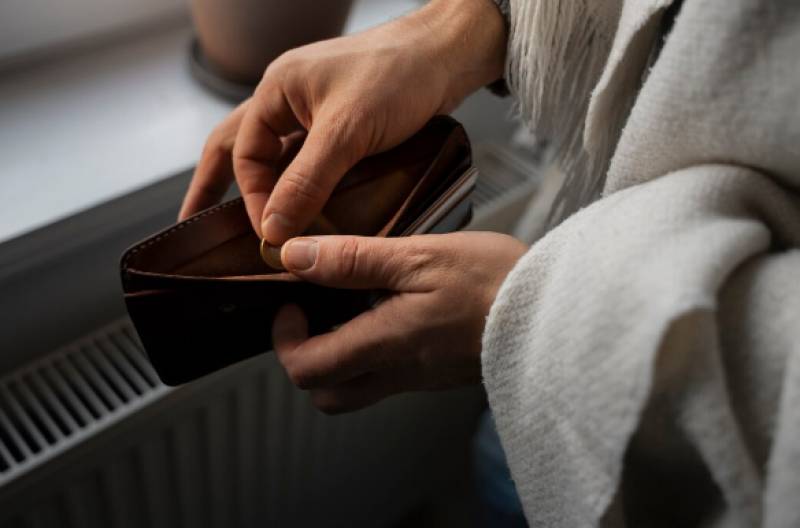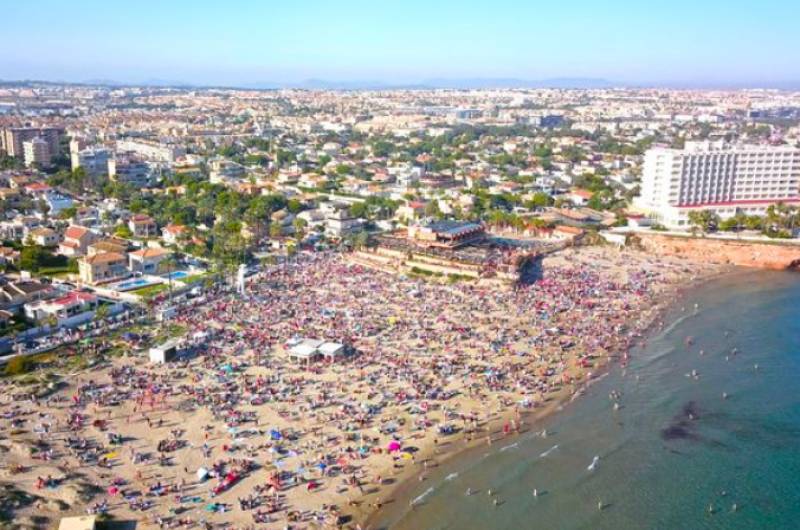

Guidelines for submitting articles to Hacienda Riquelme Golf Resort Today
Hello, and thank you for choosing Hacienda Riquelme Golf Resort.Today to publicise your organisation’s info or event.
Hacienda Riquelme Golf Resort Today is a website set up by Murcia Today specifically for residents of the urbanisation in Southwest Murcia, providing news and information on what’s happening in the local area, which is the largest English-speaking expat area in the Region of Murcia.
When submitting text to be included on Hacienda Riquelme Golf Resort Today, please abide by the following guidelines so we can upload your article as swiftly as possible:
Send an email to editor@spaintodayonline.com or contact@murciatoday.com
Attach the information in a Word Document or Google Doc
Include all relevant points, including:
Who is the organisation running the event?
Where is it happening?
When?
How much does it cost?
Is it necessary to book beforehand, or can people just show up on the day?
…but try not to exceed 300 words
Also attach a photo to illustrate your article, no more than 100kb

Iglesia de San Miguel de Salinas
The San Miguel de Salinas parish church
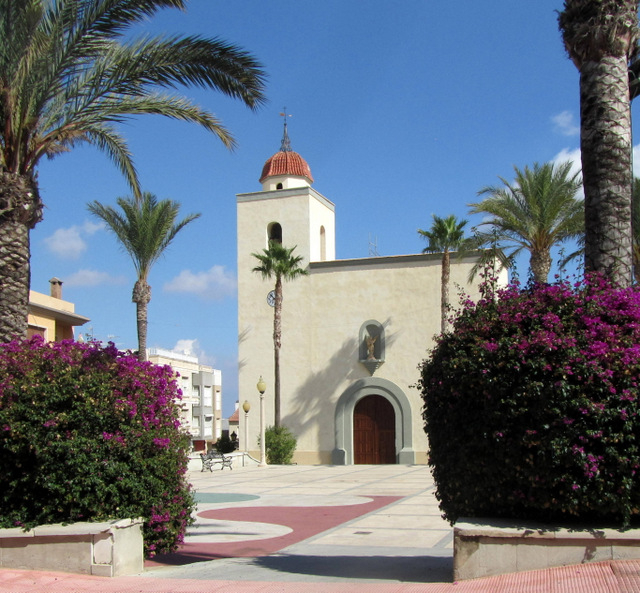 The church of San Miguel Arcángel shares its name with the town and the municipality, and was built in the early 18th century. It was one of the few to survive the disastrous 1829 earthquake which flattened much of the Vega Baja area, and as a result can lay claim to being the oldest in the area: construction was actually started at the very end of the seventeenth century after an earlier structure was demolished, and its completion date is believed to be 1722.
The church of San Miguel Arcángel shares its name with the town and the municipality, and was built in the early 18th century. It was one of the few to survive the disastrous 1829 earthquake which flattened much of the Vega Baja area, and as a result can lay claim to being the oldest in the area: construction was actually started at the very end of the seventeenth century after an earlier structure was demolished, and its completion date is believed to be 1722.
One of the earliest parish priests was Francisco José López Bueno, who was tried and found guilty by the Holy Inquisition and spent six years in prison. So draining was the experience that on his return he was unable to take up his duties again, and retired to his home town of Blanca, where he died in 1809.
Unfortunately, little has been written about the history of the church and the figures inside it, but the current 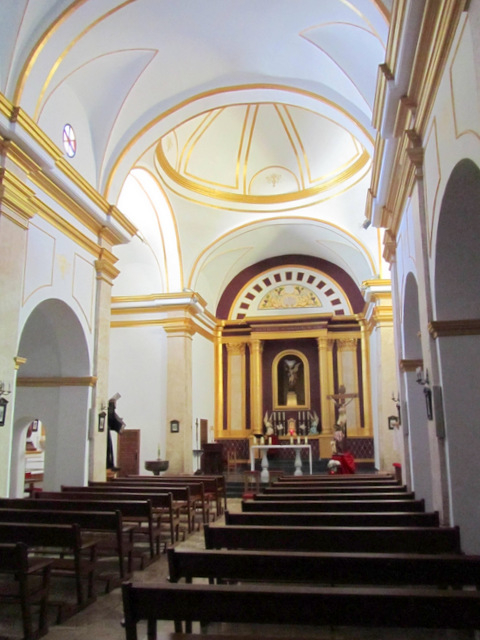 parish priest confirms that almost all of the old cult items were lost or destroyed during the Civil War in the 1930s. As a result, although the figures and tableaux inside are in keeping with the style normally associated with the traditions of religious devotion in this part of Spain, they are actually relatively recent.
parish priest confirms that almost all of the old cult items were lost or destroyed during the Civil War in the 1930s. As a result, although the figures and tableaux inside are in keeping with the style normally associated with the traditions of religious devotion in this part of Spain, they are actually relatively recent.
During the War the church suffered fire damage at the hands of the Republicans, and was used as a food warehouse by anarchists.
In the first side chapel on the left as visitors go in is the figure of the Virgen del Carmen, the story of which illustrates the extent to which the Civil War influenced the lives of people even in quiet areas such as San Miguel, as well as something of the hardships they endured. An understandably anxious local mother whose three sons had marched off to the fighting made a vow that she would donate a statue to replace those stolen or destroyed during the ransacking of local churches, and when at the end of the war all three returned home 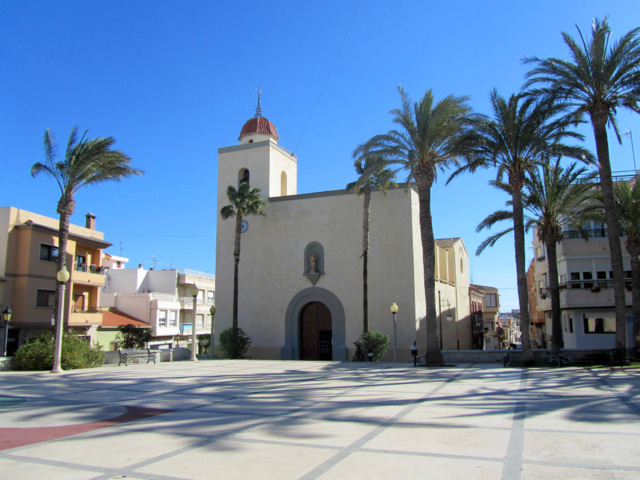 safe and well she kept her word. She commissioned the figure of the Virgen del Carmen from the sculptor Sánchez Lozano in La Torre de la Horadada, and eventually collected the completed statue using a horse-drawn cart.
safe and well she kept her word. She commissioned the figure of the Virgen del Carmen from the sculptor Sánchez Lozano in La Torre de la Horadada, and eventually collected the completed statue using a horse-drawn cart.
The figure of the Virgen de los Dolores has her own recently restored niche at the front left of the church, and the main altarpiece is presided over by San Miguel Arcángel (the arch-angel Michael), who is also featured in a statue on the outside of the building over the main entrance.
In recent years the interior of the church has been restored, and visitors are now welcome every weekday 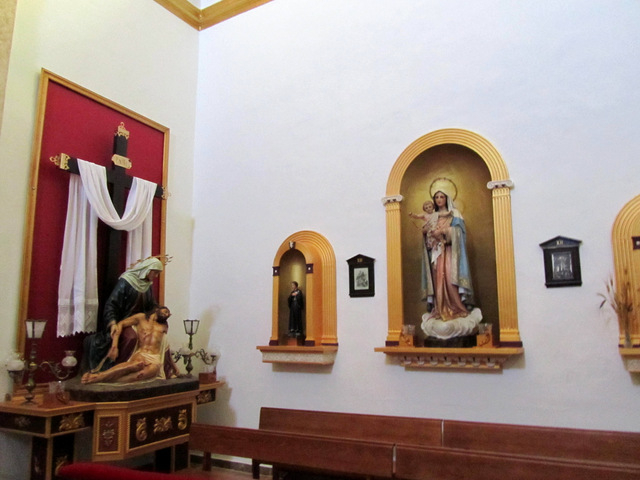 from 10.30 to 12.00. It is possible to climb to the top of the belltower, but the stairs are somewhat rickety, and it is recommended that permission should be obtained from the parish priest: if not, you might find the door locked when you come back down!
from 10.30 to 12.00. It is possible to climb to the top of the belltower, but the stairs are somewhat rickety, and it is recommended that permission should be obtained from the parish priest: if not, you might find the door locked when you come back down!
Mass is held on Mondays, Tuesdays, Thursdays and Fridays at 9.30, on Saturdays at 18.00 and on Sundays at 9.30 and 12.15.












